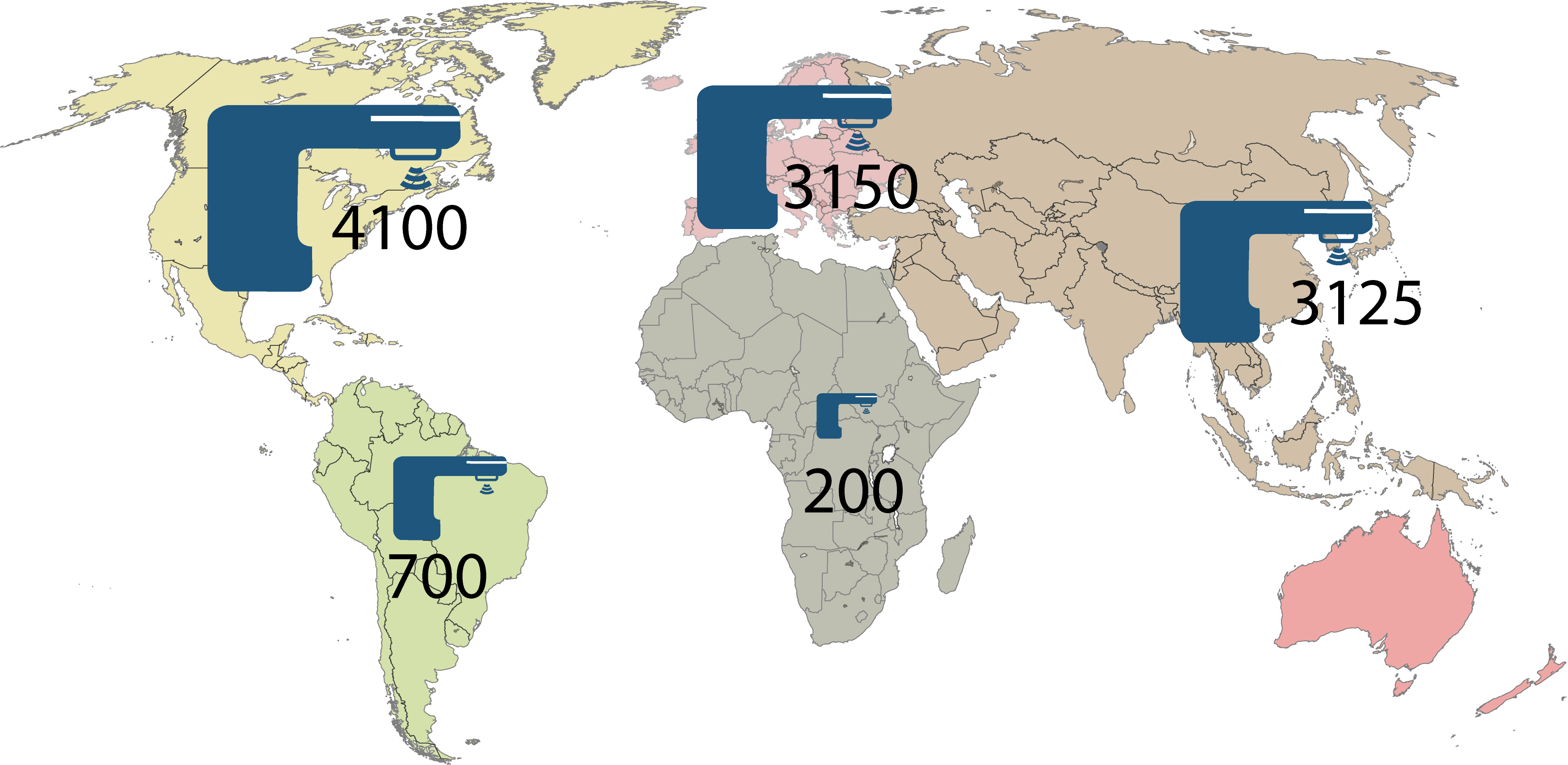How many medical linacs does the world need?
Health
There are only 13,000 medical linacs to meets the world demand for cancer treatment machines

Distribution of the number of medical linacs in the world
How many medical linacs are there in the world? According to a 2017 paper by Zubizarreta and colleagues published in Clinical Oncology, there were just over 11,000 medical linacs distributed throughout North America, Latin America, Europe, Africa, and Asia Pacific as shown in the map here. An additional 2,000 Cobalt units bring the total number of radiotherapy facilities in the world to just about 13,000.
13,000 may seem like a large number, but consider that the busiest road in North America, Highway 401 in Toronto, has about 400,000 cars on it on an average day. Whatever you think of the car industry, the linac industry is miniscule by comparison. In fact, what may come as a surprise to those who work in the radiotherapy industry, but radiotherapy is an exceedingly small industry compared to almost any industry in the world.
Is this good or bad? Zubizarreta goes on to argue that two regions (you can guess which two) are significantly under-resourced for radiotherapy. This is of course a significant problem for these regions, and many groups and people have discussed what resources are needed to increase the number of radiotherapy facilities in developing countries. But this is a difficult problem, and it could be argued that it will not be solved until the entire industry is large enough to support growth in the developing world.
I would go so far as to argue that that the entire world is underserved by radiotherapy equipment, although not evenly. If you live in a large city in most parts of North America and Europe, the chances are that you have good access to radiotherapy when you need it. However, for any rural area, in any part of the world, the access to radiotherapy is much less. Many patients in the most advanced economies, still must travel several hours by car to a radiotherapy center if they do not live in an urban area. Many studies have shown that the further patients live from a radiotherapy center, the more likely they are to decline radiotherapy even if it is offered to them.
Cancer is one of the world’s leading medical problems, and radiotherapy is an integral part of the management of the disease. To meet the world demand for cancer treatments, we need more medical linacs.
